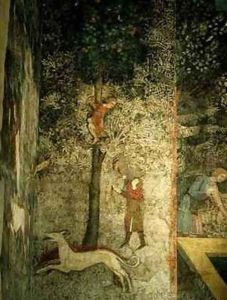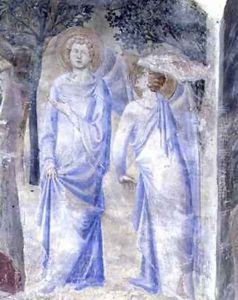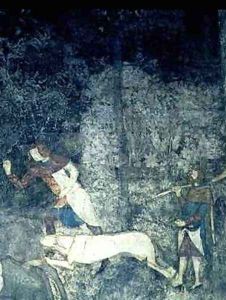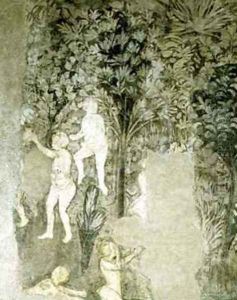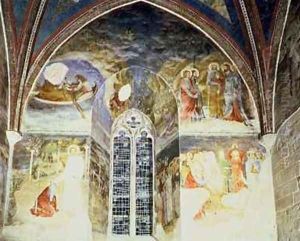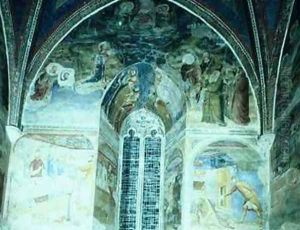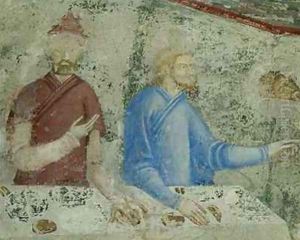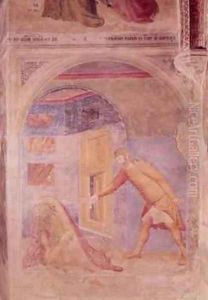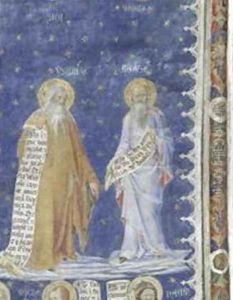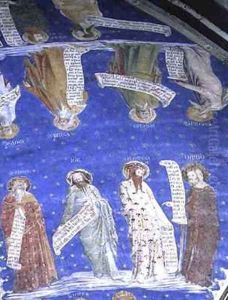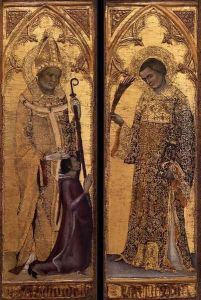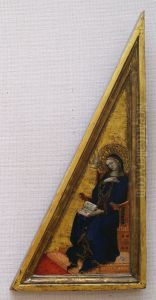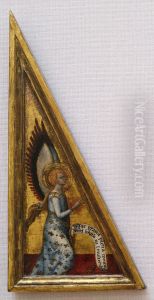Matteo Giovanetti Paintings
Matteo Giovannetti was a 14th-century Italian painter, known primarily for his work at the Papal Palace in Avignon. Born around 1322, he is believed to have hailed from Viterbo, a town in central Italy. Giovannetti's early years and training are not well-documented, but it is clear that he had established himself as a master painter by the 1340s.
Giovannetti's career became closely associated with the Papacy, particularly with Pope Clement VI, who reigned from 1342 to 1352. The Pope summoned him to Avignon, which at the time was the seat of the Papacy during its period of exile from Rome. Giovannetti's most significant commissions in Avignon include the frescoes in the Chapelle Saint-Martial and the Chapelle Saint-Jean, both located within the Papal Palace.
The frescoes in the Saint-Martial chapel, completed between 1344 and 1345, depict the life of Saint Martial and are noted for their narrative clarity and use of vivid colors. In the Saint-Jean chapel, completed by 1347, Giovannetti painted scenes from the lives of Saint John the Baptist and Saint John the Evangelist. These works are celebrated for their detailed representations of contemporary Avignonese society and the natural world.
Giovannetti's style is indicative of the International Gothic style, characterized by elegant and elongated figures, intricate detail, and a rich color palette. He played a key role in the diffusion of Italian artistic styles into France, influencing the development of French Gothic painting.
After his work in Avignon, little is known about the latter part of Giovannetti's life. His influence, however, continued to be felt in the region through his frescoes. The exact date of his death is not certain, but it is generally presumed he died around 1368.
Giovannetti's legacy endures, largely thanks to his contributions to the artistic patrimony of the Papal Palace. His frescoes in Avignon are considered some of the most important and well-preserved examples of 14th-century painting, providing a valuable insight into the cultural and artistic milieu of the Papal court during the Avignon Papacy.
